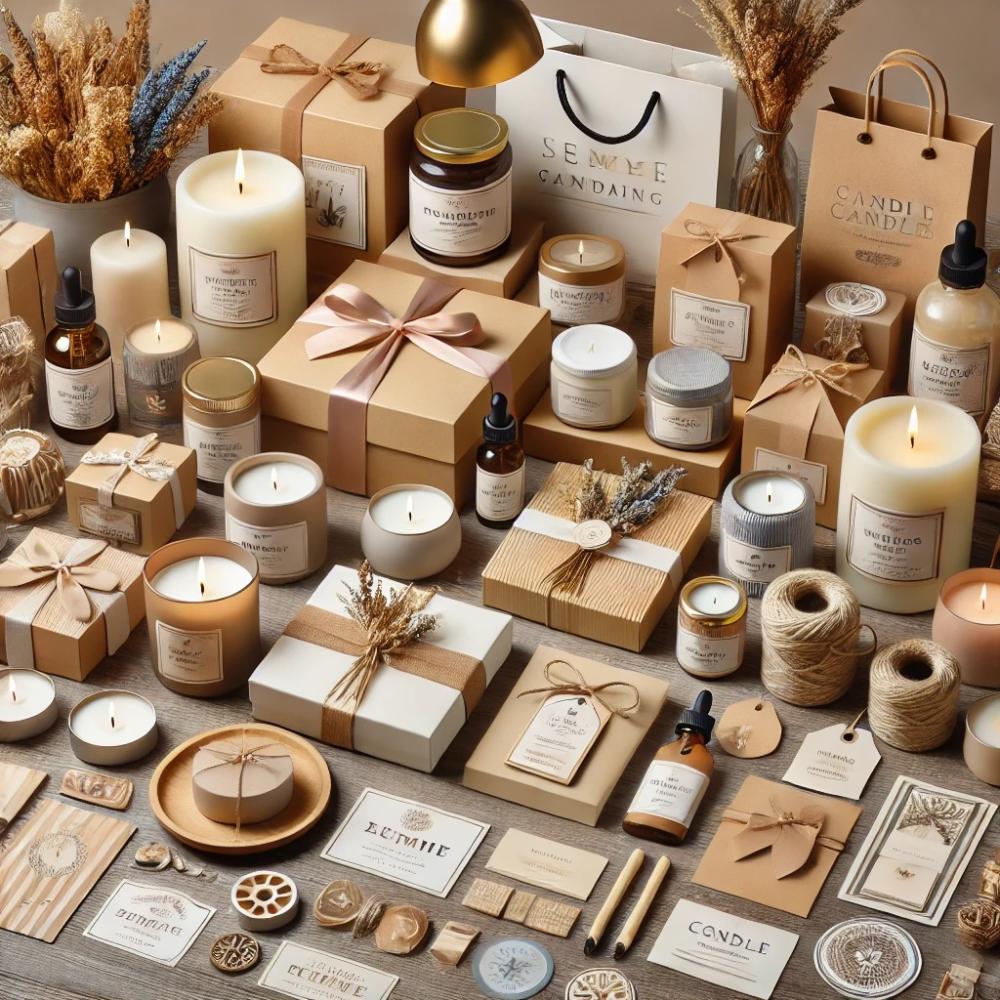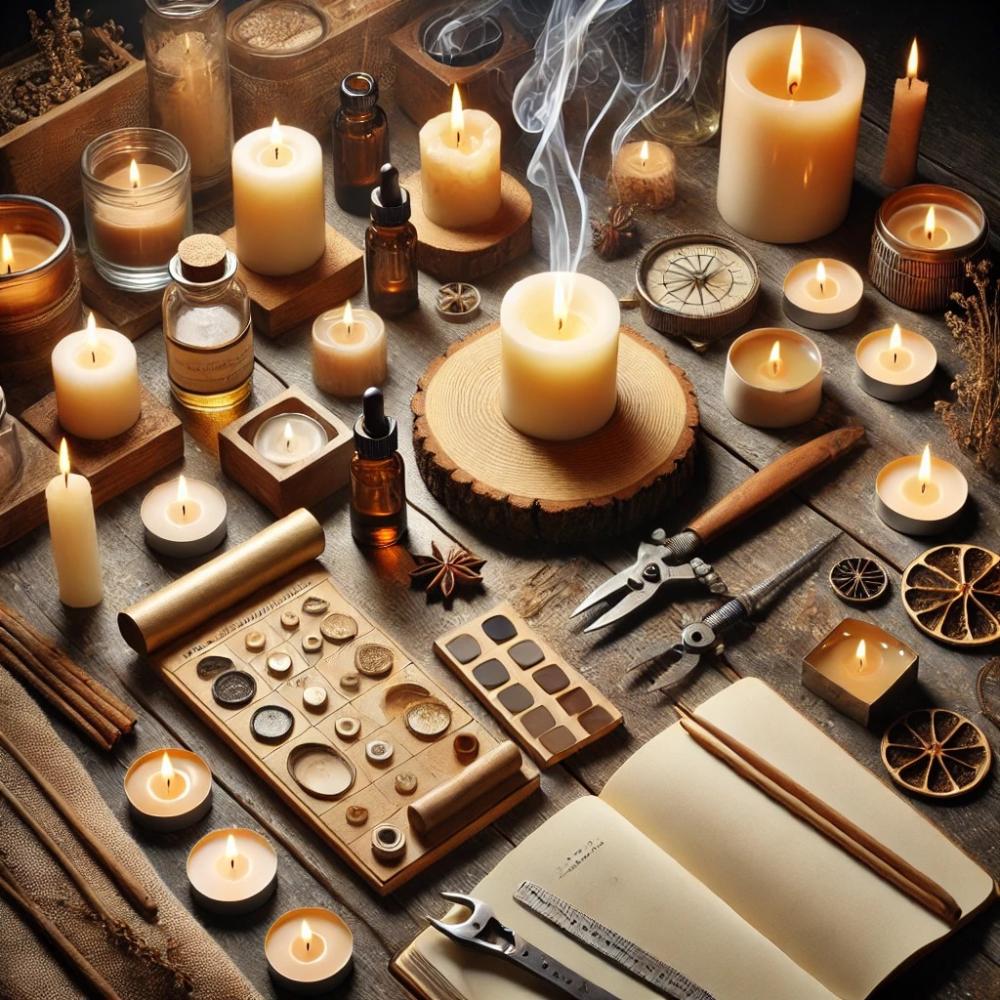Choosing the perfect wax is the first and most important step in candle making. Wax types vary in their properties, including texture, burn time, fragrance retention, and even environmental friendliness. Therefore, it's essential to familiarize yourself with the different types of wax and understand their advantages and disadvantages to select the ideal one for your project.
In this lesson, we will give you a detailed look at the common types of wax, including palm wax and gel wax, and we will help you determine which type is most suitable for making your first candle.
1. Paraffin wax
A. What is paraffin wax?
Paraffin wax is the most commonly used type of wax in traditional candle making. Its ease of use and affordability make it a great choice for beginners.
B. Features
- Fragrance retention : Paraffin wax retains fragrances well, making it suitable for making scented candles.
- Color : It blends with colors perfectly, allowing you to produce candles with bright and clear colors.
- Ease of use : It melts easily and can be easily shaped into various molds.
C. Defects
- Not environmentally friendly : It is extracted from petroleum, making it less environmentally friendly compared to natural candles.
- Smoke : Can cause smoke when burning if the appropriate wick is not chosen.
Dr. Recommended Uses
Paraffin wax is used to make most types of candles, such as pillar candles, scented candles, and pot candles.
2. Soy wax
A. What is soy wax?
Soy wax is a natural wax extracted from soybean oil. It has gained significant popularity in recent years due to its environmentally friendly nature and clean burning. Various types are available, including wax specifically formulated for molds.
B. Features
- Natural and environmentally friendly : It is extracted from renewable plant resources, making it a sustainable option.
- Clean burning : It burns slowly and does not produce black smoke, making it ideal for indoor use.
- Good fragrance retention : It absorbs essential oils well, which means the candle will retain its scent for a long time.
- Its use in molds : Some types of soy wax, such as the type available in your store, are intended for use in molded candles, as they harden well and come out of the mold easily.
C. Defects
- Higher cost : Soy wax is usually more expensive than paraffin wax.
- Casting temperature : The casting temperature needs to be carefully adjusted to achieve optimal results.
Dr. Recommended Uses
Soy wax is used in making pot candles, scented candles, and also mold candles when using the type specifically designed for that purpose.
3. Beeswax
A. What is beeswax?
Beeswax is one of the oldest types of wax and is produced naturally by bees. It has unique properties that make it highly sought after in candle making.
B. Features
- Natural and pure : Beeswax is free of chemicals, making it a healthy choice for home use.
- Natural scent : It has a natural, honey-like scent and can be used without adding essential oils.
- Clean burning : Burns slowly and produces a warm flame without smoke or unwanted odors.
C. Defects
- Price : Beeswax is more expensive than most other types of wax.
- Coloring it : Beeswax is difficult to color because of its natural golden color.
Dr. Recommended Uses
Beeswax is used in making luxury candles, religious ritual candles, and candles decorated with natural essential oils.
4. Coconut wax
A. What is coconut wax?
Coconut wax is a natural vegetable wax extracted from coconut oil. It is characterized by its smooth, creamy texture and unique properties in candle making.
B. Features
- Natural and environmentally friendly : It is extracted from renewable plant resources.
- Excellent fragrance retention : It absorbs essential oils perfectly, making the candle's scent last for a long time.
- Clean burning : Burns slowly and cleanly, providing a quiet flame.
C. Defects
- Smooth texture : Coconut wax is smoother than other types, making it unsuitable for some candle shapes.
- Cost : It is considered one of the most expensive candles.
Dr. Recommended Uses
Coconut wax is used in luxury candles and pot candles, and is often blended with soy wax to improve its burning properties.
5. Palm wax
A. What is palm wax?
Palm wax is extracted from natural palm oil, and is known for its beautiful crystalline appearance that gives candles a unique aesthetic.
B. Features
- Clean burning : It burns slowly and without smoke, making it a good choice for indoor use.
- Crystalline texture : It gives candles an attractive and distinctive crystalline appearance, especially when used in pillar candles.
- Environmentally friendly : As long as palm oil is harvested sustainably, palm wax can be an environmentally friendly option.
C. Defects
- Crystallization potential : May not be suitable for designs that require a perfectly smooth surface, due to the natural crystallization property.
Dr. Recommended Uses
Palm wax is used in making pillar candles and decorative candles thanks to its attractive crystalline appearance.
6. Gel wax
A. What is gel wax?
Gel wax is a type of transparent wax containing a mixture of mineral oils and resin. Its glassy texture allows for the creation of stunning artistic effects.
B. Features
- Transparent : Allows the addition of decorative elements inside the candle such as seashells, stones, and dried flowers.
- Long burn : It burns slowly, giving you a candle that lasts longer.
- Design flexibility : It can be used in glass containers to produce attractive decorative candles.
C. Defects
- Difficulty in control : It requires precise temperature control to ensure the perfect shape.
- Choosing containers : Heat-resistant glass containers should be used due to the nature of the gel wax.
Dr. Recommended Uses
Gel wax is used to make decorative candles, especially water candles to which internal decorations are added.
Conclusion
Choosing the perfect wax is a crucial step in crafting your first candle. Whether you opt for easy-to-use paraffin wax, natural soy wax (also suitable for block candles), luxurious beeswax, crystalline palm wax, or clear gel wax, each type offers unique properties and advantages. By understanding the characteristics of each, you can make an informed decision and create candles that add beauty and elegance to your home or business.




